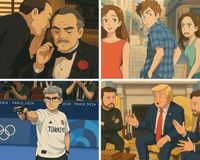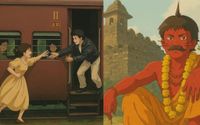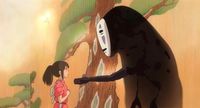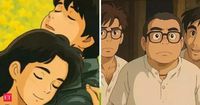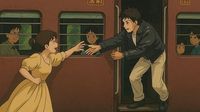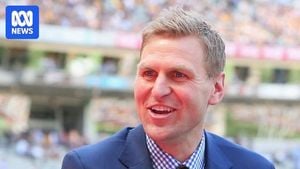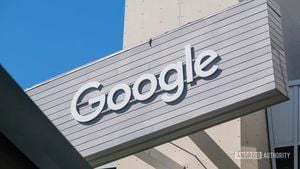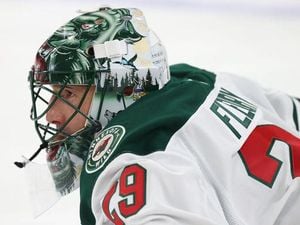The "Ghibli Effect" has taken social media by storm, with people sharing stunning AI-generated portraits and artwork inspired by the legendary animation studio, Studio Ghibli. The trend has sparked both excitement and controversy, as it brings together AI technology and the signature artistic style of the renowned Japanese studio. But what exactly is the Ghibli Effect, and why is it suddenly making headlines?
The term "Ghibli Effect" refers to the distinctive animation style and emotional storytelling techniques used by Studio Ghibli, founded by Hayao Miyazaki, Isao Takahata, and Toshio Suzuki in 1985. The studio is known for its breathtaking hand-drawn animation, imaginative worlds, strong female protagonists, and deep themes of nature, nostalgia, and human emotions. Some of the most recognizable elements of the Ghibli Effect include lush and intricate backgrounds that create a dreamlike atmosphere, soft and expressive character designs with detailed facial expressions, themes of magic and adventure that often blend fantasy with reality, quiet reflective moments that emphasize emotion over action, and a focus on nostalgia and childhood wonder.
Films like My Neighbor Totoro, Spirited Away, Howl’s Moving Castle, and Princess Mononoke have embodied this effect, making Studio Ghibli one of the most influential animation houses in the world.
The recent resurgence of the Ghibli Effect can be traced back to advancements in artificial intelligence (AI) image generation. OpenAI’s GPT-4o update introduced a feature allowing users to generate images in various styles, including those inspired by Studio Ghibli. Users began uploading their photos and using AI tools to transform them into Ghibli-style characters, complete with whimsical backgrounds and dreamy expressions. The results were widely shared on Twitter, Instagram, and Reddit, fueling the viral trend.
Several AI image generators, including OpenAI's DALL•E and MidJourney, started producing detailed artworks that resembled the hand-drawn aesthetic of Ghibli films. Hashtags like #GhibliAI, #GhibliEffect, and #GhibliStyle trended globally.
As AI-generated Ghibli art spread, an old interview of Hayao Miyazaki resurfaced, where he strongly criticized AI in animation. In the viral clip, Miyazaki calls AI-generated animation an "insult to life itself", stating that true art must come from human experience and emotions. His comments have reignited discussions about the role of AI in creative fields, particularly in animation.
In response to growing concerns over copyright and ethical issues, OpenAI announced restrictions on generating images in the styles of living artists, including Studio Ghibli. This move aimed to prevent unauthorized replication of unique artistic styles without permission.
The sudden popularity of the Ghibli Effect has ignited a heated debate. Supporters of AI art argue that it democratizes creativity, allowing people to generate beautiful artworks effortlessly. Critics, including many artists and animators, claim that AI is undermining human creativity by replicating unique styles without effort, training, or originality. Ghibli’s own legacy is deeply rooted in traditional hand-drawn animation, with Miyazaki repeatedly rejecting digital shortcuts. His films emphasize the beauty of meticulous craftsmanship, making the use of AI to mimic his work controversial among fans and industry professionals.
The Ghibli Effect has become a fascinating example of how AI and traditional artistry intersect. While it has allowed millions to engage with the magic of Ghibli-style art, it has also raised ethical and creative concerns about the role of AI in the future of animation. Whether this trend fades or evolves, one thing is certain: Studio Ghibli's influence remains stronger than ever, inspiring new generations of artists, animators, and dreamers worldwide.
On March 27, 2025, cricket legend Sachin Tendulkar tweeted about the trend, humorously imagining what it would be like if Ghibli had made cricket. His tweet read, "AI-sa kuch trend ho raha hai, maine suna. Toh socha, what if Ghibli made cricket?" This playful engagement highlights how the Ghibli Effect has permeated popular culture, sparking creativity across various fields.
Barsee, a digital creator, also commented on the rapid rise of AI-generated Ghibli-style images, stating, "It's been 24 hours since OpenAI unexpectedly shook the AI image world with 4o image generation." Users have been sharing a variety of images, including Bollywood movie scenes reimagined in Ghibli style, showcasing the versatility and appeal of this artistic trend.
However, not everyone is thrilled about the Ghibli Effect. Some users have expressed their discontent, with one tweet stating, "stop posting ghibli style images!" This backlash reflects a growing concern among traditional artists and fans who fear that AI-generated art may dilute the unique qualities that define hand-drawn animation.
As the Ghibli Effect continues to unfold, it raises vital questions about the future of creativity. Is it possible for AI to coexist with human artistry, or will it overshadow the painstaking efforts of artists who dedicate their lives to perfecting their craft? The debate is far from over, and as technology advances, the lines between human creativity and machine-generated art will likely blur even further.
In the end, the Ghibli Effect serves as a reminder of the enduring legacy of Studio Ghibli and the profound impact it has had on the world of animation. As artists and fans navigate this new landscape, they must grapple with the implications of AI in creative fields while celebrating the magic that Ghibli has brought to life.
